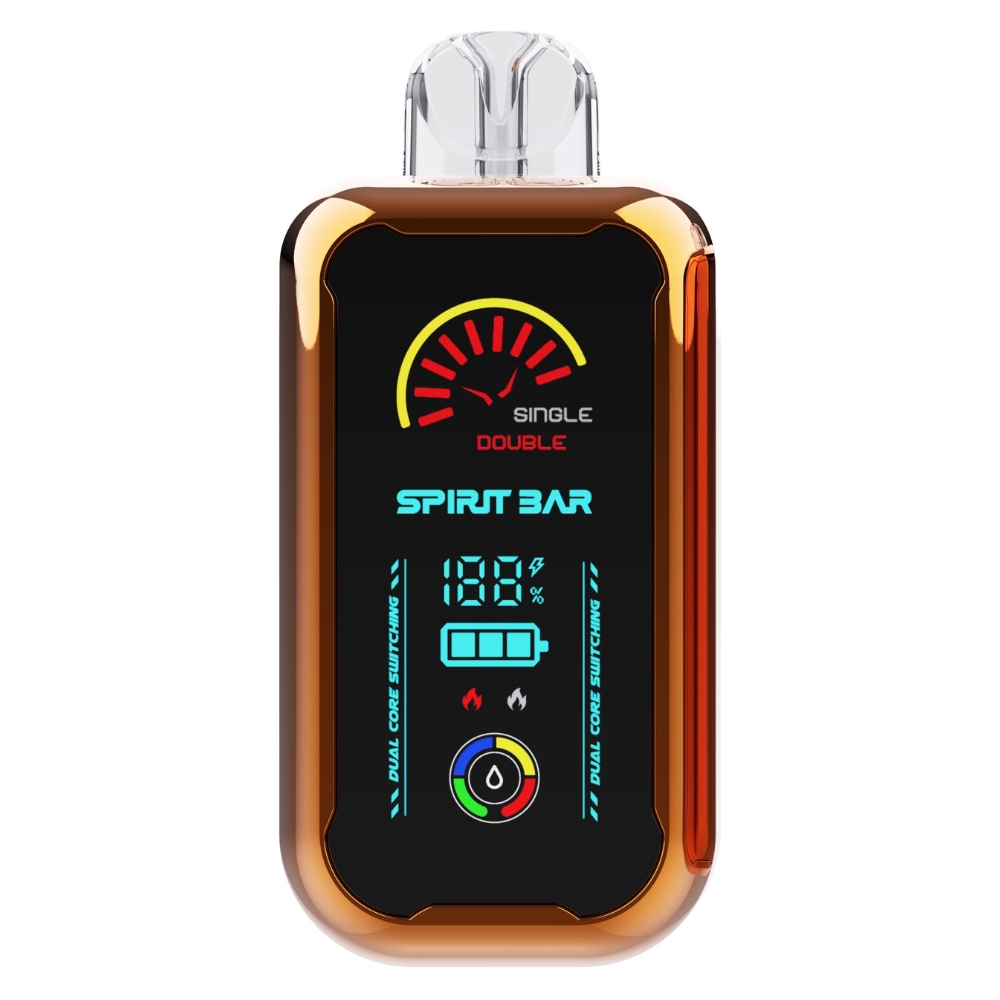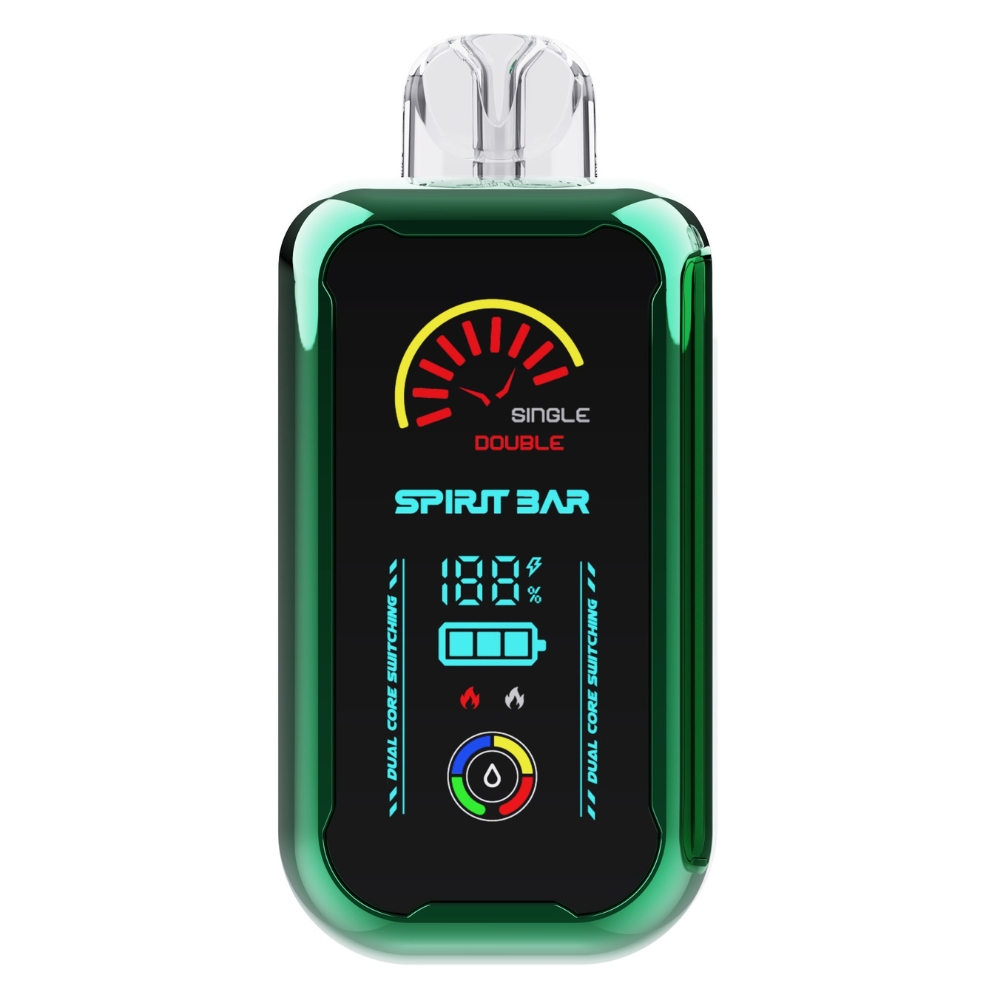How Do Vape Detectors Work: A Comprehensive Guide
If you’re wondering how vape detectors work, you’re not alone. As vaping becomes more popular, schools, businesses, and other public places are looking for ways to detect when people are vaping where they shouldn’t be. Vape detectors are one solution that’s gaining popularity, but how do they work?
Vape detectors come in two main types: particulate detectors and sensor detectors. Particulate detectors work by detecting the tiny particles that are released when someone vapes. These detectors use a laser beam to detect the particles in the air and can be very effective at detecting vaping. Sensor detectors, on the other hand, detect the chemicals that are released when someone vapes. These detectors can detect chemicals like nicotine, propylene glycol, and vegetable glycerin, which are all commonly found in e-cigarettes and other vaping devices.
Overall, vape detectors are becoming more common as a way to detect when people are vaping in places where they shouldn’t be. Whether you’re a school administrator, business owner, or just curious about how these devices work, understanding the basics of vape detectors can help you make informed decisions about their use.
Basic Principles of Vape Detectors
Vape detectors are devices that use various sensors to detect the presence of vaping. These sensors are designed to detect the particles and chemicals that are released when someone vapes. The basic principles of vape detectors are simple: they use sensors to detect vaping and then use detection algorithms to determine if vaping is occurring.
Sensors and Detection
The sensors used in vape detectors can include particulate sensors, chemical sensors, and temperature sensors. Particulate sensors detect the small particles that are released when someone vapes. Chemical sensors detect the chemicals that are released when someone vapes. Temperature sensors detect the changes in temperature that occur when someone vapes.
Vape detectors use these sensors to detect vaping in a variety of settings, including public places, schools, and workplaces. They are designed to be sensitive enough to detect even small amounts of vaping, but not so sensitive that they detect false positives.
Detection Algorithms
Once the sensors detect vaping, the vape detector uses detection algorithms to determine if vaping is occurring. These algorithms are designed to filter out false positives and only detect actual vaping.
The detection algorithms used in vape detectors can vary depending on the type of sensor being used. For example, particulate sensors may use algorithms that analyze the size and shape of the particles being detected. Chemical sensors may use algorithms that analyze the specific chemicals being detected.
Overall, vape detectors are an effective way to detect vaping in a variety of settings. By using a combination of sensors and detection algorithms, vape detectors can accurately detect vaping while minimizing false positives.
Types of Vape Detectors
There are two main types of vape detectors: particulate detectors and sensor detectors. Each type of detector uses different technology to detect the presence of vaporized e-liquids in an area.
Particulate Detectors
Particulate detectors use a sensor to detect the presence of small particles that are released when vaping occurs. These detectors are commonly used in public places like schools and office buildings to prevent people from vaping indoors. They work by measuring the concentration of particles in the air and triggering an alarm if the concentration exceeds a certain threshold.
The sensor used in particulate detectors is typically a laser or LED that shines a beam of light through the air. When particles are present in the air, they scatter the light, which is then detected by a photodetector. The detector then sends a signal to the alarm system, which alerts security personnel or building management.
Sensor Detectors
Sensor detectors use a sensor to detect the presence of specific chemicals that are released when vaping occurs. These detectors are more expensive than particulate detectors, but they are also more accurate and reliable. They work by measuring the concentration of chemicals in the air and triggering an alarm if the concentration exceeds a certain threshold.
There are several types of sensors that can be used in vape detectors, including:
-
Photoionization detectors (PIDs): These sensors use UV light to ionize the air and create a current. When vapor or smoke is present, it absorbs the UV light, disrupting the current and indicating the presence of vaping. PIDs are commonly used in smoke detectors.
-
Metal oxide semiconductor (MOS) sensors: These sensors use a thin film of metal oxide that reacts with certain chemicals. When vapor or smoke is present, it changes the electrical resistance of the film, indicating the presence of vaping.
-
Infrared spectroscopy sensors: These sensors use infrared light to detect the presence of certain chemicals. When vapor or smoke is present, it absorbs the infrared light, indicating the presence of vaping.
In conclusion, both particulate detectors and sensor detectors are effective at detecting the presence of vaporized e-liquids in an area. However, sensor detectors are more accurate and reliable, but also more expensive. The choice of detector depends on the specific needs of the building or facility where it will be installed.
Installation and Placement of Vape Detectors
When it comes to installing and placing vape detectors, there are a few things to keep in mind to ensure that they work properly and effectively. Here are some tips to help you get started:
1. Choose the Right Location
The first step in installing a vape detector is to choose the right location. Vape detectors should be placed in areas where vaping is likely to occur, such as bathrooms, locker rooms, and other secluded areas. It’s important to avoid placing detectors in areas where there is a lot of air movement or where there are other sources of smoke or vapor, as this can interfere with the detector’s accuracy.
2. Mount the Detector Properly
Once you’ve chosen the right location for your vape detector, the next step is to mount it properly. Most vape detectors come with mounting brackets or adhesive strips that make it easy to attach the detector to a wall or ceiling. It’s important to follow the manufacturer’s instructions carefully when mounting the detector to ensure that it is secure and stable.
3. Test the Detector
After you’ve installed the vape detector, it’s important to test it to make sure that it is working properly. Most detectors come with a test button or feature that allows you to check the detector’s sensitivity and accuracy. It’s a good idea to test the detector periodically to ensure that it is still functioning correctly.
4. Consider Multiple Detectors
In larger areas, it may be necessary to install multiple vape detectors to ensure adequate coverage. For example, in a large bathroom or locker room, it may be necessary to install multiple detectors to cover all areas where vaping is likely to occur. It’s important to consider the size and layout of the area when determining how many detectors are needed.
5. Regular Maintenance
Finally, it’s important to perform regular maintenance on your vape detectors to ensure that they continue to function properly. This may include cleaning the detector’s sensors, replacing batteries, and checking for any damage or wear and tear. Regular maintenance can help ensure that your detectors are always ready to detect vaping activity and keep your facility safe and secure.
Benefits of Using Vape Detectors
Vape detectors offer several benefits to schools, offices, and public places. Here are some of the benefits of using vape detectors:
1. Preventing Teen Vaping
Vape detectors can help prevent teen vaping, which has become a significant problem in recent years. According to the It’s Your Life Foundation, 3 million high school and middle school students have tried vaping or smoking in the last year alone. By installing vape detectors in schools and other public places, officials can discourage students from vaping and smoking on campus.
2. Improving Air Quality
Vaping and smoking can affect air quality and lead to health problems, especially for people with respiratory issues. Vape detectors can help improve air quality by detecting the presence of vapor and smoke and alerting officials to take action. This can lead to a healthier environment for everyone in the building.
3. Enhancing Safety
Vape detectors can enhance safety in public places by preventing fires and explosions caused by vaping devices. Some vape detectors can detect overheating batteries, which can prevent accidents and injuries.
4. Cost-Effective
Vape detectors are cost-effective compared to other security measures. They are easy to install and maintain, and they can provide long-term benefits. Installing vape detectors can also help prevent costly damage caused by vaping and smoking.
5. Customizable
Vape detectors can be customized to fit the needs of different environments. They can be programmed to detect specific chemicals and adjust sensitivity levels to prevent false alarms. They can also be integrated with other security systems for added protection.
Overall, vape detectors offer several benefits to schools, offices, and public places. By installing vape detectors, officials can prevent teen vaping, improve air quality, enhance safety, and save costs.
Challenges and Limitations of Vape Detectors
While vape detectors can be a useful tool for discouraging smoking and vaping in prohibited areas, they are not without their limitations and challenges. Here are some of the main challenges and limitations of vape detectors:
False Positives
One of the main challenges of vape detectors is the potential for false positives. For example, some vape detectors may mistake harmless vapors, such as those from essential oil diffusers or humidifiers, for harmful vaping or smoking. This can lead to unnecessary alarms and inconvenience for individuals in the area.
Limited Detection Range
Another limitation of vape detectors is their limited detection range. Depending on the model and placement of the detector, it may only be able to detect vaping or smoking within a certain distance or area. This means that individuals who are smoking or vaping outside of the detection range may not be detected, which could lead to continued smoking or vaping in prohibited areas.
High Cost
Vape detectors can also be costly, which may limit their use in certain areas or institutions. The cost of installation, maintenance, and replacement can add up over time, making it difficult for some schools or businesses to afford them.
Privacy Concerns
Some individuals may also have concerns about privacy when it comes to vape detectors. For example, some detectors may use cameras or other sensors to detect vaping or smoking, which could raise concerns about surveillance and privacy violations.
Limited Effectiveness
Finally, it is important to note that vape detectors may not be effective in all situations. For example, some individuals may find ways to circumvent the detectors, such as by using stealth vaping devices or smoking in areas outside of the detection range. Additionally, some individuals may simply ignore the detectors or continue to smoke or vape despite the alarms.
Overall, while vape detectors can be a useful tool for discouraging smoking and vaping in prohibited areas, they are not without their limitations and challenges. It is important to carefully consider these factors before implementing vape detectors in any setting.
Future Trends in Vape Detection Technology
As vaping continues to increase in popularity, the need for effective vape detection technology is becoming more pressing. In response, researchers and manufacturers are developing new and innovative ways to detect and prevent vaping in public spaces. Here are some of the future trends in vape detection technology:
Artificial Intelligence and Machine Learning
Artificial intelligence and machine learning technologies are being integrated into vape detectors to improve their accuracy and reliability. These technologies can analyze data from multiple sensors and sources to identify vaping more effectively. They can also adapt to changes in vaping behavior and adjust their detection methods accordingly.
Multi-Sensor Technology
Vape detectors are becoming more sophisticated with the use of multi-sensor technology. These devices can detect a wide range of chemicals, compounds, and particles that are typically emitted from vaping devices. By combining multiple sensors, vape detectors can provide more accurate and comprehensive detection capabilities.
Cloud-Based Monitoring
Cloud-based monitoring systems allow for centralized monitoring and management of multiple vape detectors. This technology enables real-time alerts and notifications to be sent to appropriate personnel when vaping is detected. It also provides data analytics and reporting capabilities to help organizations better understand vaping trends and patterns.
Mobile Applications
Mobile applications are being developed to provide real-time information about vaping activity in public spaces. These applications can be used to monitor and manage vape detectors remotely, view detection data, and receive alerts and notifications. They can also provide educational resources and information about the dangers of vaping.
As the use of vaping devices continues to grow, the need for effective vape detection technology will only increase. These future trends in vape detection technology are just a few examples of how researchers and manufacturers are working to address this issue. With continued innovation and development, we can create safer and healthier public spaces for everyone.
Frequently Asked Questions
How do vape detectors differentiate between vaping and smoking?
Vape detectors use advanced sensors to detect and analyze particles and chemicals present in vape aerosols. They are designed to differentiate between regular smoke and vape emissions, providing accurate detection and alerts. Vaping produces different chemicals and particles than smoking, and vape detectors can distinguish between the two based on this difference.
Are vape detectors sensitive enough to detect small amounts of vapor?
Yes, vape detectors are highly sensitive and can detect even small amounts of vapor. They are designed to detect even the smallest particles and chemicals present in vape aerosols and can provide accurate alerts when vaping is detected.
What types of sensors are used in vape detectors?
Vape detectors use various types of sensors, including optical sensors, acoustic sensors, and chemical sensors. Optical sensors detect changes in light transmission caused by vapor, while acoustic sensors detect changes in sound waves caused by vapor. Chemical sensors analyze the chemical composition of the air to detect the presence of vaping chemicals.
Can vape detectors be fooled by other sources of smoke or vapor?
Vape detectors are designed to be highly accurate and can distinguish between vaping and other sources of smoke or vapor, such as smoking or cooking. However, they may occasionally produce false alarms due to factors such as humidity or other environmental factors.
Do vape detectors emit any harmful radiation or chemicals?
No, vape detectors do not emit any harmful radiation or chemicals. They are designed to detect and analyze the air quality in the surrounding environment and do not emit any harmful substances.
Are there any privacy concerns with the use of vape detectors?
Vape detectors are designed to be used in public spaces, such as schools, workplaces, and other enclosed areas, where vaping is prohibited. As such, there are no privacy concerns associated with their use. However, it is important to ensure that the detectors are installed in a way that respects the privacy of individuals and does not infringe upon their rights.


